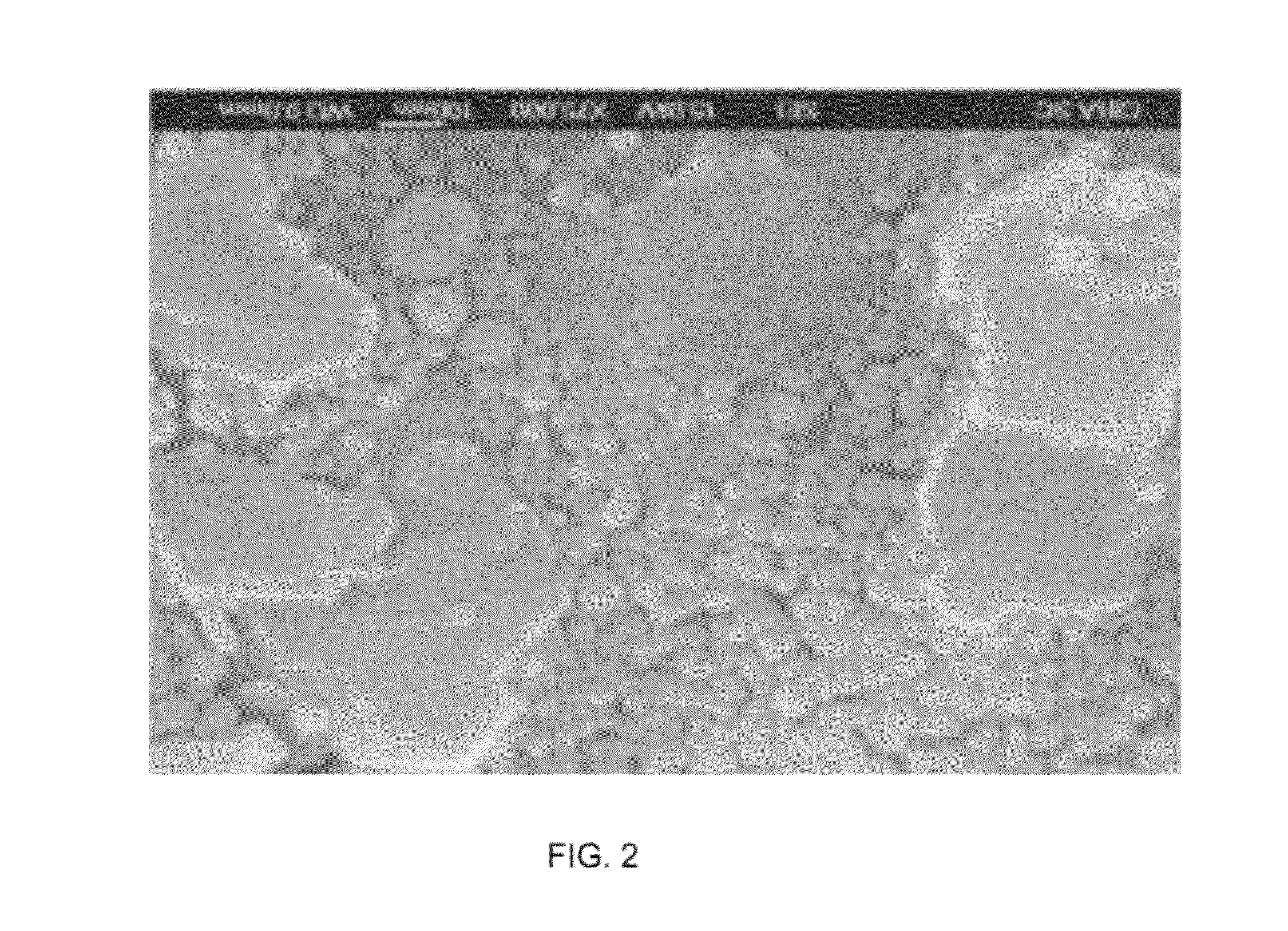Aqueous dispersion of hybrid particles consisting of organic or inorganic pigment particles and organic nano-particles and process for preparing the same
- Summary
- Abstract
- Description
- Claims
- Application Information
AI Technical Summary
Benefits of technology
Problems solved by technology
Method used
Image
Examples
example 1
(70 Parts of Kaolin to 30 Parts of SMA) 50% Dispersion
[0051]In a double wall oil heated reactor of 1 litre, in which a turbine agitator is placed, 442 grams of a 65% kaolin slurry (type SPS from IMERIS) are added, together with the make-up water, then topped up with 132 grams of crushed SMA. The SMA has an MAA content of 26% and a molecular weight of 80,000 kg / kmol, to which is added a 25% solution of NH3 in an MAA;NH3 ratio of 1:1. The temperature is brought to 160° C. and the speed of the agitator to 200 rpm. The pressure in the reactor is approx. 6 bars. After 4 hours a Hybrid pigment polymer dispersion with a solid content of approx. 61% by weight is formed with precipitated particles between 15 and 30 nm. The MAA in these particles is almost fully imidised. The Tg of the outermost layer of the Hybrid polymer pigment is between 185° C. and 200° C.[0052]Brookfield viscosity 23° C. 100 rpm spindle 5-380 mPa / c.[0053]PH 5.8
[0054]FIG. 1 shows a visualisation of particles. There is a ...
example 2
(70 Parts of Al(OH)3 and 30 Parts of SMA) 50% Dispersion
[0055]In a double wall oil heated reactor of 1 litre, in which a turbine agitator is placed, 203 grams of a 65% kaolin slurry (type SPS from IMERIS) are added, together with the make-up water, with 203 grams of Al(OH)3, then topped up with 122 grams of crushed SMA. The SMA has an MAA content of 26% and a molecular weight of 80,000 kg / kmol, to which is added a 25% solution of NH3 in an MAA;NH3 ratio of 1:1. Furthermore, a potassium salt of an SMA can be added as dispersing agent with a molecular weight of 1000 kg / kmol, with an MAA content of 48% (in this case it is not added). The K-salt:SMA ratio=0.03:1. The temperature is brought to 160° C. and the speed of the agitator to 200 rpm. The pressure in the reactor is approx. 6 bars. After 4 hours a Hybrid pigment polymer dispersion with a solid content of approx. 52% by weight is formed with precipitated particles between 10 and 25 nm. The MAA in these particles is almost fully imi...
PUM
| Property | Measurement | Unit |
|---|---|---|
| Temperature | aaaaa | aaaaa |
| Temperature | aaaaa | aaaaa |
| Temperature | aaaaa | aaaaa |
Abstract
Description
Claims
Application Information
 Login to View More
Login to View More - R&D
- Intellectual Property
- Life Sciences
- Materials
- Tech Scout
- Unparalleled Data Quality
- Higher Quality Content
- 60% Fewer Hallucinations
Browse by: Latest US Patents, China's latest patents, Technical Efficacy Thesaurus, Application Domain, Technology Topic, Popular Technical Reports.
© 2025 PatSnap. All rights reserved.Legal|Privacy policy|Modern Slavery Act Transparency Statement|Sitemap|About US| Contact US: help@patsnap.com



